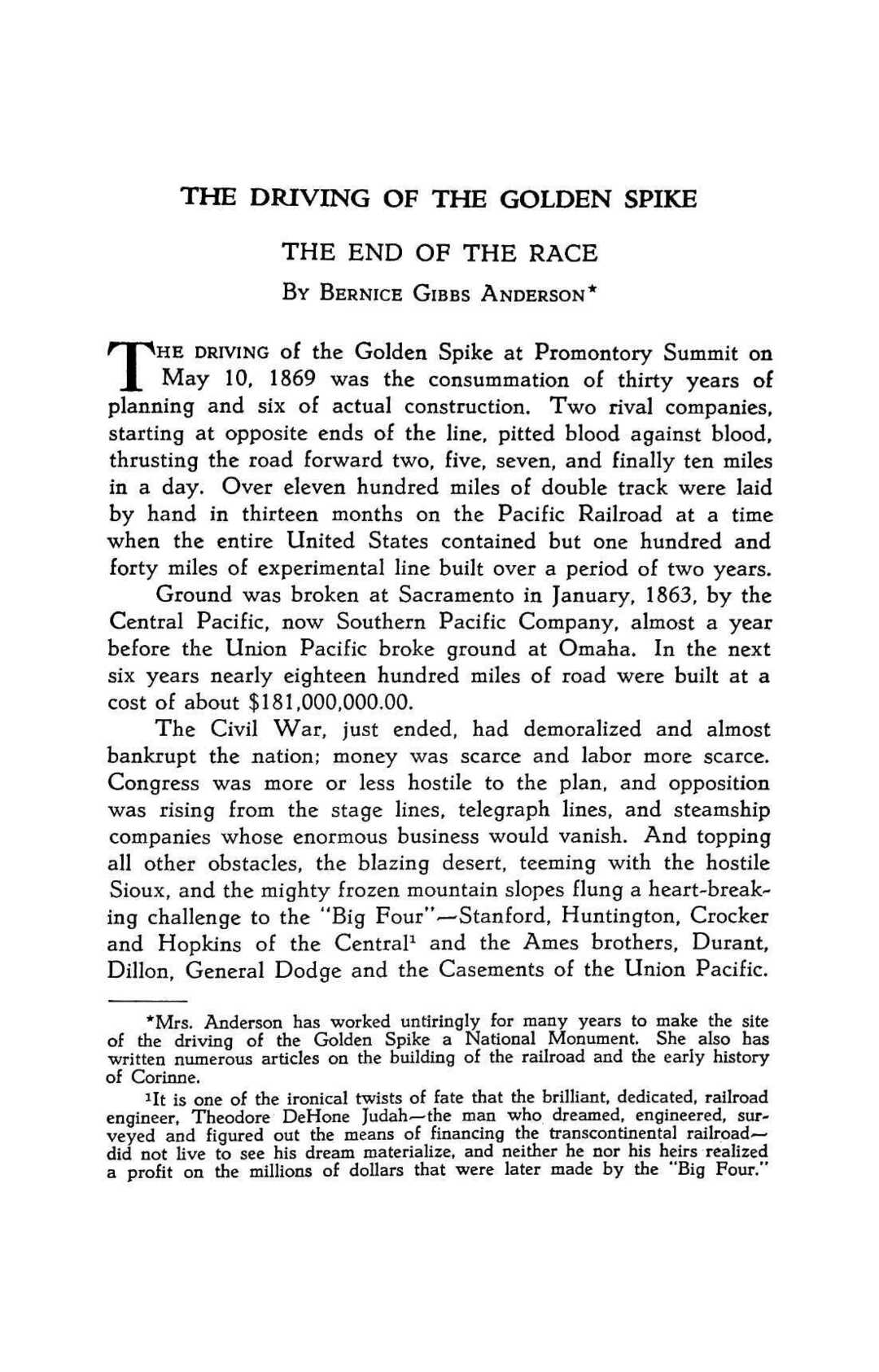CENTENNIALS
J
ULY, 1947, marked the first of Utah's great centennial celebrations. As all the world knows that month, a hundred years before, had witnessed the entry of the Mormon pioneers into the valley of the Great Salt Lake. Almost immediately expansion began to the north, south, east, and west, and within a very few years, settlements were scattered all over the Great Basin. Beginning then with the great state-wide centennial in 1947, successive celebrations have been held throughout the state, and will continue to be held through the coming years until the cycle of bicentennials commences nearly a hundred years from now. During 1956 Utah celebrates the one hundreth birthday of several counties, cities and smaller communities, and several institutions, some of which continue to prosper and serve the state. During the winter of 1855-56, the first and only full session (fifth) of the territorial legislature to meet at Fillmore was convened. This session of the legislature, in acts approved in January created nine counties, only three of which still exist. The names and locations of the defunct counties, most of which never really existed except on paper, are quite interesting. Humboldt and St. Mary's occupied what is now the northeast quarter of the state of Nevada. Greasewood County occupied what would amount to the western half of the present county of Box Elder. Malad, on the other hand, occupied a considerable portion of the northern part of Box Elder and extended over the present UtahIdaho line into the Malad River Valley of southern Idaho. Cedar County lay immediately to the west of present Utah County and eventually was absorbed by that county and Toole. Shambip lay immediately to the west of Cedar County and now forms a portion of Tooele. Of the counties created in 1856 and still in existence, Cache County, practically co-extensive with Cache Valley, like several other Utah counties, was actually created before settlement took place. However, in September of 1856, Wellsville was established by a group of settlers under Peter Maughan, and soon thereafter other settlements sprang up throughout the county. On the other hand, Box Elder County, created this same year, already had communities which had been administered as a portion of the original Weber County. Beaver County also dates from




















